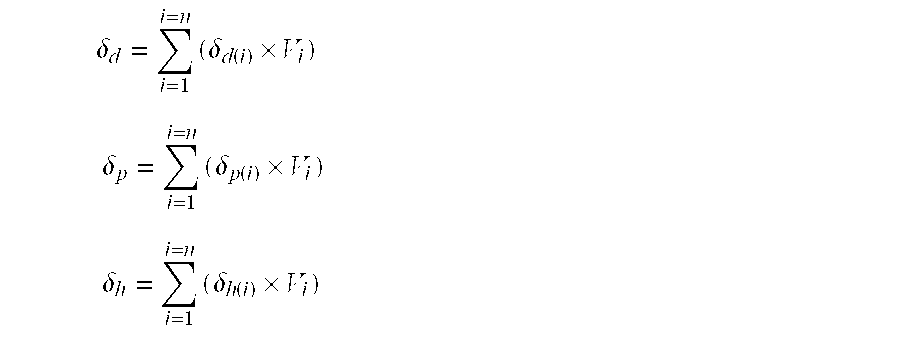Method of optimizing heavy crude pipeline transportation
a technology of pipeline transportation and heavy crude, which is applied in the direction of transportation and packaging, other chemical processes, separation processes, etc., can solve the problems of increasing the number of visbreaking units, increasing the number of pipelines, and increasing the difficulty of pipeline transportation
- Summary
- Abstract
- Description
- Claims
- Application Information
AI Technical Summary
Benefits of technology
Problems solved by technology
Method used
Image
Examples
example 2
[0031] A solvent consisting of 90% by volume of the naphtha used in example 1 and of 10% by volume of ethyl acetate, whose component δp of the Hildebrand parameter is 5.3 (MPa)1 / 2, whose component δh of the Hildebrand parameter is 7.2 (MPa)1 / 2 and boiling temperature (BP) is 77° C., is prepared. The polar component of this solvent is 0.9 (MPa)1 / 2. The heavy crude of example 1 is diluted using 15% by mass of this solvent. The viscosity measured at 20° C. is then 1.56 Pa·s. A 17% improvement in the dilution efficiency is observed in this case.
example 3
[0032] A solvent consisting of 90% by volume of the naphtha used in example 1 and of 10% by volume of butyraldehyde, whose components δp and δh of the Hildebrand parameter are respectively 5.3 (MPa)1 / 2 and 7 (MPa)1 / 2 and whose boiling temperature (BP) is 75° C., is prepared. The polar component of this solvent is 0.9 (MPa)1 / 2. The heavy crude of example 1 is diluted using 15% by mass of this solvent. The viscosity measured at 20° C. is then 1.59 Pa·s. A 15% improvement in the dilution efficiency is observed in this case.
example 4
[0033] A solvent consisting of 90% by volume of the naphtha used in example 1 and of 10% by volume of 1-butanol, whose component δp of the Hildebrand parameter is 5.7 (MPa), whose component δh of the Hildebrand parameter is 15.8 (MPa)1 / 2 and boiling temperature (BP) is 118° C., is prepared. The polar component of this solvent is 0.9 (MPa)1 / 2. The heavy crude of example 1 is diluted using 15% by mass of this solvent. The viscosity measured at 20° C. is then 1.63 Pa·s. A 12% improvement in the dilution efficiency is observed in this case.
PUM
 Login to View More
Login to View More Abstract
Description
Claims
Application Information
 Login to View More
Login to View More - R&D
- Intellectual Property
- Life Sciences
- Materials
- Tech Scout
- Unparalleled Data Quality
- Higher Quality Content
- 60% Fewer Hallucinations
Browse by: Latest US Patents, China's latest patents, Technical Efficacy Thesaurus, Application Domain, Technology Topic, Popular Technical Reports.
© 2025 PatSnap. All rights reserved.Legal|Privacy policy|Modern Slavery Act Transparency Statement|Sitemap|About US| Contact US: help@patsnap.com


